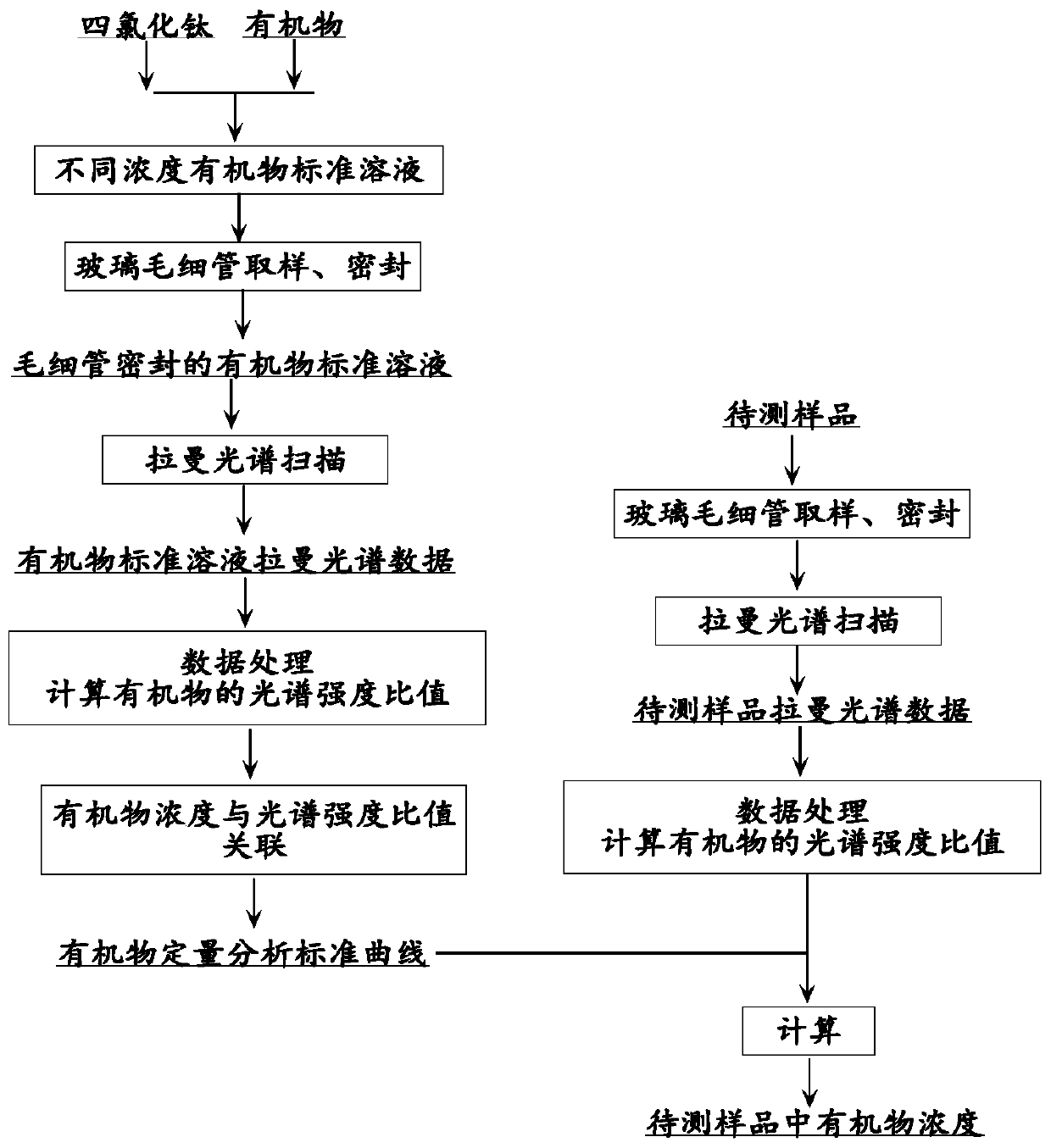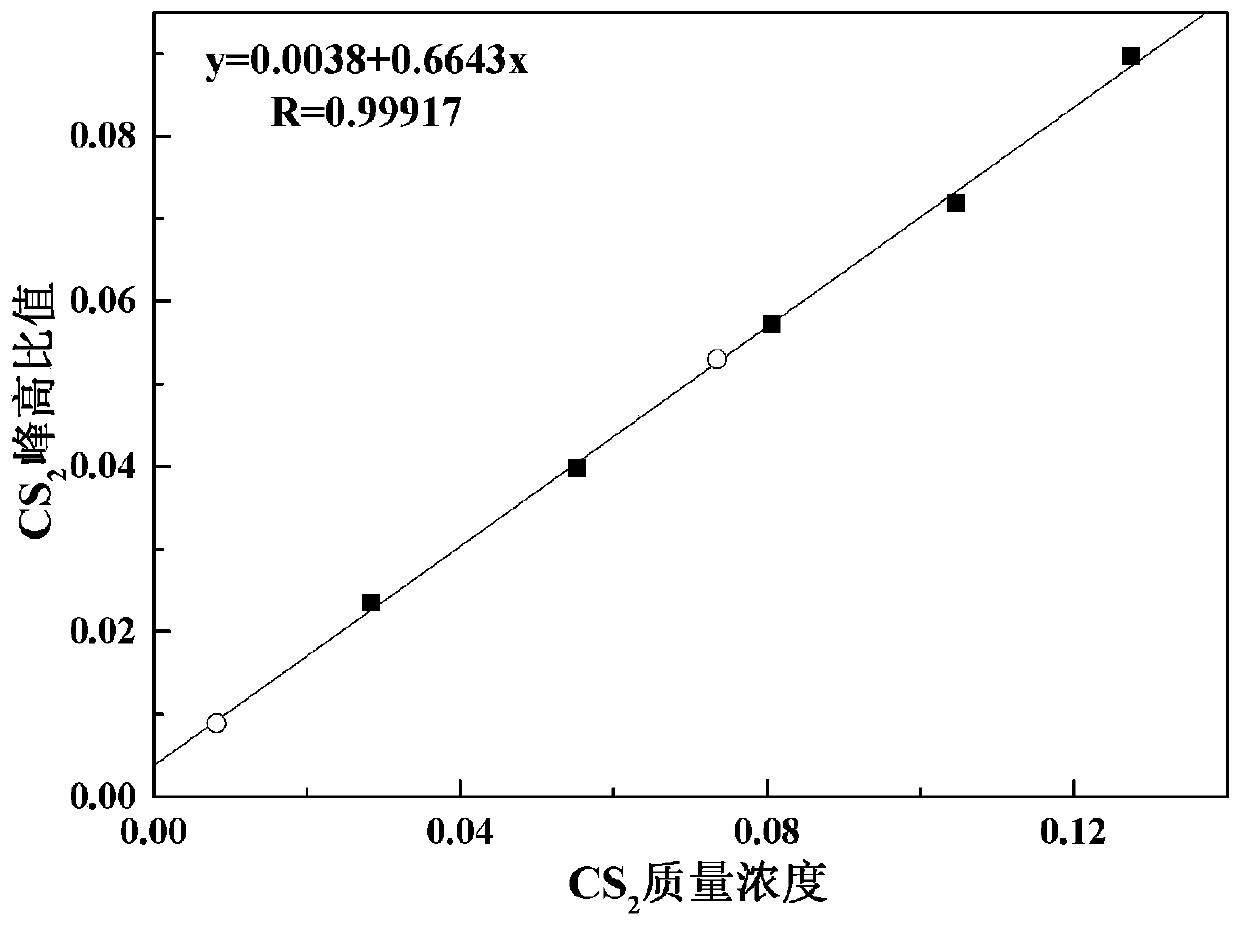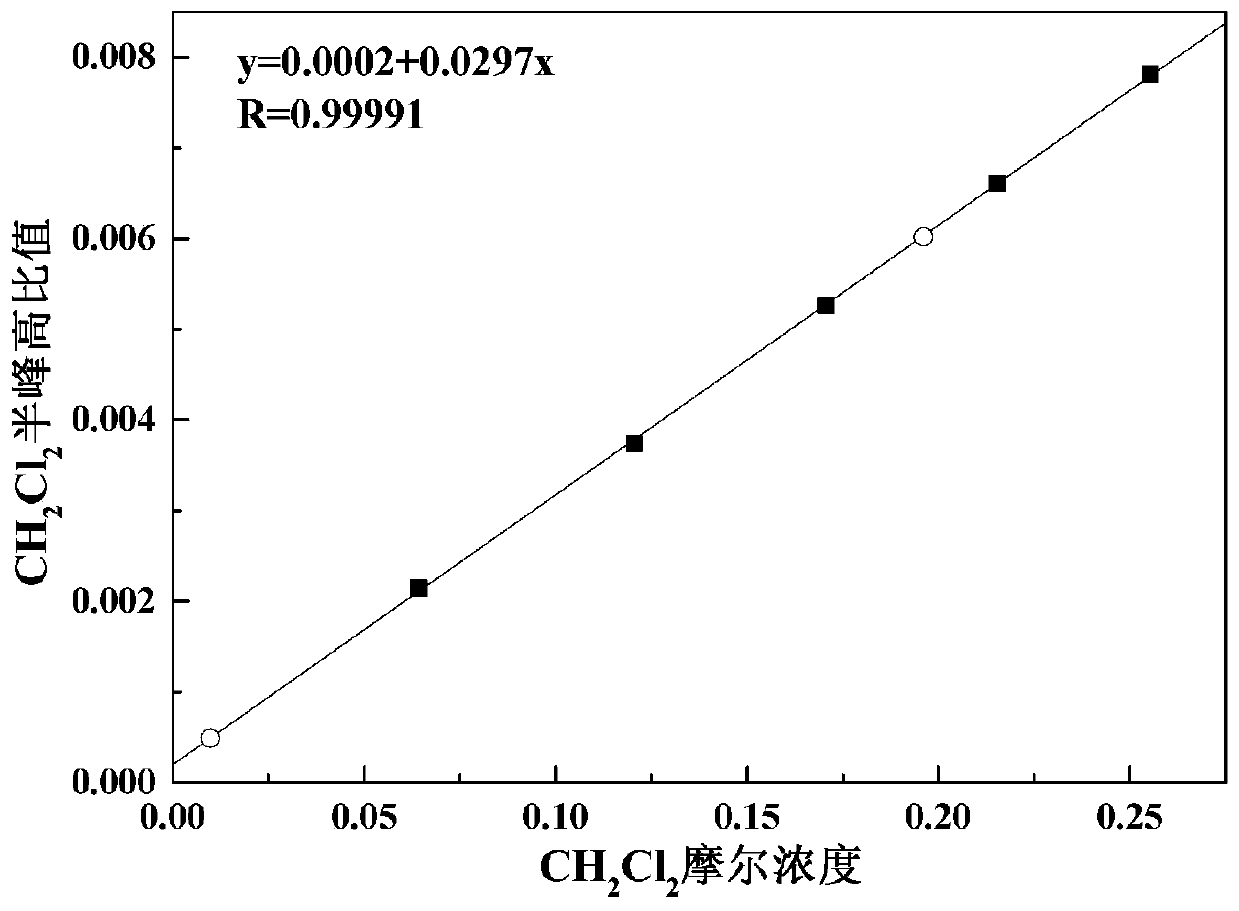Raman spectrum quantitative analysis method for organic matters in titanium tetrachloride
A Raman spectroscopy, titanium tetrachloride technology, applied in the metallurgical field, can solve the problems of few quantitative analysis, low analysis stability, weak Raman signal intensity, etc., to achieve easy online analysis, low detection cost, non-destructive The effect of online analysis
- Summary
- Abstract
- Description
- Claims
- Application Information
AI Technical Summary
Problems solved by technology
Method used
Image
Examples
Embodiment 1
[0029] Get 5 parts of 25ml analysis pure titanium tetrachloride and add 1ml, 2ml, 3ml, 4ml and 5ml carbon disulfide respectively, be mixed with the standard solution that carbon disulfide mass concentration is respectively 2.84%, 5.52%, 8.05%, 10.46% and 12.74%, take 5 Insert glass capillary tubes with an inner diameter of 1 mm into 5 parts of the standard solution, use capillary action to draw a small amount of standard solution, and then immediately melt the two ends of the capillary with an alcohol lamp and seal it to obtain the standard sample of the capillary to be tested; the 5 standard samples of the capillary to be tested Subtract the baseline data from the standard sample Raman spectral data obtained after Raman spectral scanning to obtain 5 corrected spectral data, and extract 654.5 cm from the corrected spectral data -1 The peak height at (carbon disulfide characteristic peak) and 395cm -1 The peak height (titanium tetrachloride characteristic peak) at place, and ca...
Embodiment 2
[0032] Take 5 parts of 25ml of analytically pure titanium tetrachloride and add 1, 2, 3, 4 and 5ml of dichloromethane respectively to prepare the standards with dichloromethane molar concentrations of 6.42%, 12.06%, 17.06%, 21.53% and 25.53% respectively. solution, take 5 glass capillary tubes with an inner diameter of 2 mm and insert them into 5 parts of standard solution respectively, use capillary action to draw a small amount of standard solution, and then immediately melt the two ends of the capillary tube with a kerosene lamp and seal it to obtain the standard sample of the capillary tube to be tested; The standard sample Raman spectrum data obtained after the standard sample of the capillary was scanned by Raman spectrum was subtracted from the baseline data to obtain 5 corrected spectral data, and 705cm -1 The peak height at (dichloromethane characteristic peak) and 395cm -1 The peak height (titanium tetrachloride characteristic peak) at place, and calculate the ratio ...
PUM
| Property | Measurement | Unit |
|---|---|---|
| diameter | aaaaa | aaaaa |
Abstract
Description
Claims
Application Information
 Login to View More
Login to View More - R&D
- Intellectual Property
- Life Sciences
- Materials
- Tech Scout
- Unparalleled Data Quality
- Higher Quality Content
- 60% Fewer Hallucinations
Browse by: Latest US Patents, China's latest patents, Technical Efficacy Thesaurus, Application Domain, Technology Topic, Popular Technical Reports.
© 2025 PatSnap. All rights reserved.Legal|Privacy policy|Modern Slavery Act Transparency Statement|Sitemap|About US| Contact US: help@patsnap.com



